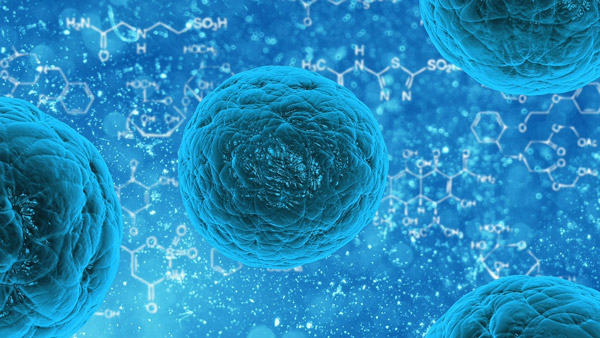
Welcome to part two of our countdown of stem cell milestones in 2016. Some of these amazing scientific discoveries have the potential to change the face of modern medicine and cure previously incurable ailments.
July 2016
Stem Cell Transplant Can Help HIV Patients Battling Lymphoma
Researchers have discovered that a transplant of autologous stem cells is the best way to treat HIV positive patients who have lymphoma. Previously, doctors believed that HIV patients could not safely receive traditional forms of treatment like chemotherapy and stem cell transplants. These new findings may help to save the lives of thousands of HIV-positive patients around the world.
August 2016
Umbilical Cord Blood May Contain the Next Eczema Treatment
Medical researchers in the United States have discovered that mesenchymal stem cells (MSCs) can be used to treat atopic dermatitis, also known as eczema. It is a common inflammatory condition that causes rashes on the skin. 34 patients were treated with MSCs derived from umbilical cord blood, with the majority seeing a significant and persistent improvement in their symptoms.
Stem Cell Treatment Provides Hope for Premature Ageing
Scientists may have discovered a treatment for a condition that causes premature ageing. Hypopituitarism occurs when the pituitary gland does not produce the hormones necessary to regulate growth and metabolism. The researchers used stem cells to create pituitary cells and transplanted them into rats. The cells began producing the hormones necessary for proper growth and metabolism.
Identifying New Approach to Make More Stem Cells from Cord Blood
Researchers in the Netherlands have identified a new technique to make more stem cells from cord blood. They have discovered a microRNA “switch” that can be triggered to prompt stem cells into creating more stem cells. This technique will greatly increase the number of stem cells available for a transplant within a cord blood sample, potentially saving many lives.
September 2016
New Strategy to Limit the Side Effects of Stem Cell Transplants
Scientists in Germany discovered a new technique to reduce the side effects experienced after receiving a stem cell transplant. It may reduce the risk of conditions like graft-versus-host disease (GvHD), where the transplanted cells begin attacking the recipient’s cells. The new technique involves transplanting regulatory T-cells — immune cells that suppress the immune response of the transplanted tissue. This finding could make stem cell transplants safer and is a significant stem cell milestone.
Stem Cell Study Breakthrough Gives Hope to Disabled Stroke Victims
Scottish researchers have discovered that stem cells may be able to restore some mobility in patients who have had a stroke. The treatment has already been tested on 11 male stroke victims in Scotland. All patients had a significant improvement in their movement after the treatment. This is one of the most significant stem cell milestones in 2016.
Clinical Trial Using Cord Blood Stem Cells to Treat Macular Degeneration
Macular degeneration is the leading cause of blindness in people over the age of 55. It is caused by the deterioration of tissue near the centre of the retina, an area called the macular. It leads to a loss in central vision. Researchers from the University of Illinois in Chicago have begun a phase 2 clinical trial to see if stem cells can cure this condition. Scientists will coax multipotent stem cells into becoming retinal pigment epithelium (RPE), which will be transplanted to repair the macular. Earlier trials have had very positive results and this trial may lead to a viable cure for this common condition.
October 2016
Stem Cells Injected into Brain in World-First Parkinson’s Trial
In another of the most important stem cell milestones in 2016, scientists have successfully managed to transplant stem cells into the brain of a Parkinson’s patient. The Australian scientists hope that the stem cells will repair the neurones in the patient’s brain, reducing the symptoms of his Parkinson’s disease.
Experimental Stem Cell Therapy Helps Restore Paralysed Man’s Movement
An experimental stem cell treatment has helped a paralysed man regain some mobility. Within 3 months of receive a stem cell transplant, Kris Boesen regained some feeling in his legs and movement in his arms. This is a significant breakthrough which indicates a stem cell treatment for paralysis might be possible in the future.
November 2016
Research towards Improving the Therapeutic Potential of Stem Cells
New research indicates that stem cell transplants can be made more effective by expanding the size of stem cell samples in the laboratory before transplantation. Scientists are now working on ways to grow human mesenchymal stem cells (hMSCs) in a laboratory setting.
Watching Stem Cells Change Provides Clues to Fighting Osteoporosis
Researchers at the University of Missouri have started a new study that tracks the movement of stem cells in an effort to understand how they create bone. The researchers hope to use their findings to develop a stem cell treatment for osteoporosis.
New Study Shows that Stem Cells Could Improve Stroke Recovery
A new study from scientists in South Korea indicates that pre-conditioned mesenchymal stem cells (MSCs) may be useful for repairing damage to the brain after a stroke. Their research builds upon previous studies that show stem cells can help to reduce stroke symptoms.
December 2016
Reviving Optimism for Regenerative Medicine
An article published on the Stat medical blog highlights some of the additional benefits of using stem cell in medicine. The article highlights accelerated drug discovery, a focus on economically crippling diseases and lower costs for medical treatment.
New Stem Cell Research to Help Understand & Treat Metabolic Disorders
A*STAR researchers have discovered a way to create a special type of fat cell that can regulate blood sugar levels. They hope it can be used to treat metabolic diseases and diabetes.
We hope you enjoyed reading about some of the best stem cell milestones in 2016. The many incredible scientific discoveries that have occurred this year are very exciting and show that stem cells have an important role to play in the future of medicine.
{{cta(‘010124f3-c9bc-4a23-b9fc-74953e6288c9’)}}

